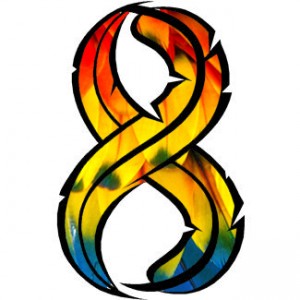You must be logged in to take this course → LOGIN | REGISTER NOW
7.1 BIOENERGETICS AND THE ROLE OF ATP
Bioenergetics is the gain knowledge of of energy relationships and vigor transformations (conversions) in residing organisms. Organisms obtain vigour by means of metabolizing the meals they eat or put together. Food contains potential power in its bonds. When these bonds are damaged down, a huge amount of kinetic power is most commonly launched. Some of this vigour is stored within the form of knowledge energy within the bonds of ATP molecules whilst the rest escapes as warmth
Oxidation-Reduction Reaction
quite a lot of lifestyles methods in organisms contain regular go with the flow of power. This ener gy flow includes the acquisition, transformation and use of vigour for more than a few existence methods like progress, action, replica and so on.
For all life methods, oxidation-reduction reactions (redox reactions) are the direct supply of energy. Redox reactions involve exchange of electrons between atoms. The loss of electrons is referred to as oxidation whilst the gain of eletrons is called reduction.
Electrons will also be an power source. It depends on their region and arrangement in atoms. For example; when they’re reward in oxygen, they make steady organization with oxygen atom and aren’t good vigour supply. But if electrons are dragged away from oxygen and hooked up to a couple different atom e.G. Carbon or hydrogen, they make unstable association. They try to move again to oxygen and when this happens, vigor is launched.
In dwelling organisms redox reactions contain the loss and obtain of hydrogen atoms. We know that a hydrogen atom contains one proton and one electron. It implies that when a molecule loses a hydrogen atom, it honestly loses an electron (oxidation) and similarly when a molecule gains hydrogen atom, it virtually positive factors an electron (discount).
ATP: The Cell’s Energy Currency
The predominant vigour currency of all cells is a nucleotide called adenosine triphosphate (ATP). It is the essential vigor source for majority of the cell capabilities like synthesis of macromolecules (DNA, RNA, and proteins), movement, transmission of nerve impulses, energetic transport, exocytosis and endocytosis and so forth.
7.2 PHOTOSYNTHESIS
Photosynthesis is the synthesis of glucose from carbon dioxide and water within the presence of sunlight and chlorophyll, with oxygen as a by-product. Photosynthesis is an anabolic (constructing) procedure and is an important aspect of bioenergetics in residing techniques.
It is the main biochemical pathway and close to all lifestyles depends upon it. It includes many coordinated biochemical reactions that arise in plants, some protists (algae), and a few micro organism
7.2.2 ROLE OF CHLOROPHYLL AND LIGHT
sunlight power is absorbed with the aid of chlorophyll. It is then transformed into chemical vigor, which drives the photosynthetic procedure. Simplest about one percent of the sunshine falling on the leaf floor is absorbed, the leisure is reflected or transmitted. The sunshine rays of unique wavelengths aren’t best differently absorbed with the aid of photosynthetic pigments however are also another way mighty in photosynthesis. The blue and purple lights carry out extra photosynthesis.
7.2.3 LIMITING FACTORS IN PHOTOSYNTHESIS
Any environmental component the absence or deficiency of which can reduce the cost of a metabolic response, is known as limiting element for that reaction. Many causes like mild intensity, temperature, awareness of carbon dioxide and availability of water act as limiting causes for photosynthesis.
Outcomes of sunshine depth and temperature
The expense of photosynthesis varies with gentle depth. It decreases as gentle intensity decreases and raises as depth raises. Nevertheless at much greater light intensity, the expense of photosynthesis becomes regular.
The price of photosynthesis decreases with lower in temperature. It raises as temperature is elevated over a limited range. But when mild depth is low, growing the temperature has little impact on the fee of photosynthesis.
Outcome of carbon dioxide concentration
As carbon dioxide attention rises, the cost of photosynthesis goes on growing unless limited through different factors. Develop in carbon dioxide attention beyond a detailed stage motives the closure of stomata and it decreases the price of photosynthesis.
7.3.2 MECHANISM OF breathing
The method of respiration involves tricky sequence of reactions. For the study of all the reactions of glucose oxidation, we will be able to go into the mechanism of cardio breathing. Cardio respiratory is a steady method, but for comfort we will divide it into three primary stages; 1- glycolysis, 2- Krebs cycle and three- electron transport chain.
Glycolysis happens in cytoplasm and oxygen shouldn’t be involved in this stage. Because of this, it occurs in both types of respiration i.E. Aerobic and anaerobic. In glycolysis, glucose (6C) molecule is damaged into two molecules of pyruvic acid (3C).
In Krebs cycle, the pyruvic acid molecules are totally oxidized, together with the formation of ATP, NADH and FADH2 . Earlier than entering in Krebs cycle, pyruvic acid is 2 transformed into a 2-carbon compound called acetyl-CoA.
Electron transport chain is the ultimate step of mobile respiration. It is the transfer of electron on an electron transport chain. In this step, NADH and FADH2 unencumber electrons and hydrogen ions. These electrons are taken up through a series of electron carriers. When electrons move through the series of electron carriers they lose vigour, which is used to synthesize ATP. On the end of chain, electrons and hydrogen ions combine with molecular oxygen and form water.
Figuring out THE concepts
1. How would you define bioenergetics whilst touching on it to the oxidation discount reactions in dwelling methods?
2. Interpret that ATP is the executive vigour foreign money of all cells.
Three. What is the function of chlorophyll and light in photosynthesis?
4. Outline the methods involved in photosynthesis?
5. State how the various light depth carbon dioxide concentration and temperature impact the rate of photosynthesis?
6. Define the mechanism of breathing at the same time defining glycolysis, Krebs cycle and electron transport chain.
7. Draw a assessment of aerobic and anaerobic respiratory.
Eight. How will you evaluate breathing and photosynthesis?
Course Curriculum
Course Reviews
No Reviews found for this course.




